Titans, currently streaming on DC Universe, features one of DC’s most well known and well-liked superhero teams. The Teen Titans are getting another TV makeover- one rooted in a grittier and more cynical attitude than any of their previous incarnations. These Titans appear hardened, less naive, and less enthusiastic. Being a superhero is not easy, a fact that Titans seems ready to explore to the fullest.
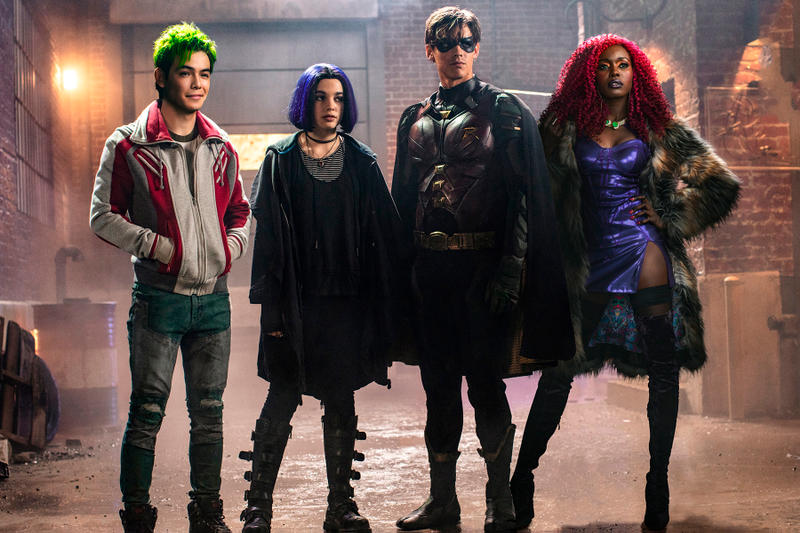
DC Universe’s ‘Titans’
This use of cynicism, nihilism, and darkness is not a new frontier in comics. The costumed do-gooders of the golden and silver age have evolved significantly, absorbing and reflecting the discontent of a world that has changed the way it believes in heroes. But what was the turning point? What snapped in the public consciousness to change the course of American mythology? In a broad sense, the answers can be traced through recent history. In the abstract, the answers are all about truth.
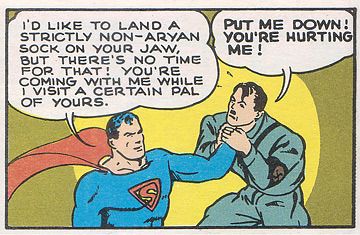
The war to end all wars. The nomenclature given to WWI was about as trustworthy as the “unsinkable” Titanic. When horrible things happen, we like to believe that nothing like it will ever happen again. That was the anxiety weighing on the world at the dawn of superheroes. The world had ended, we had survived, but despite all the hope in the world nothing was going to stop it from ending again. In 1938, the United States was half drowned by the great depression and still recovering from the aftershock of WWI. After such immense hardship and loss, the reality of WWII’s approach was stifling. Even if the whole country felt worn down, WWII presented an undeniably clear right and wrong. The world was going to end again, and they had to join the fight. The idea is heroic to its core and left a ready audience for Jerry Siegel and Joe Shuster’s breakout story – Superman. The America of 1938 needed hope. They needed something to believe in. Superman became just that. These ideas – truth, justice, and The American Way – were a light to look toward as the war took its toll. Heroes are easy when the villain is clear, a duality that became the foundation for the Golden Age of comics. But after WWII, things were not so simple. The world shifted violently and fiction shifted with it.
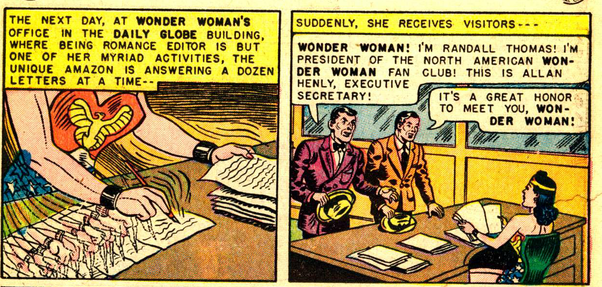
The 1950’s marked a cultural push in the United States to promote conformity. Sameness is safe, different is risky. To a country exhausted of risk, basking in the certainty of the nuclear family represented a chance to recreate the feeling of home. If everything was nice, safe, and comfortable, it was like the previous years had changed nothing at all. Comics felt the shockwave of 1950’s wholesomeness in the iron grip of the Comics Code Authority. They were selling the idea that the bad guys had been defeated, so what use were heroes? Psychiatrist Frederick Wertheim looked to shoot characters like Superman, Wonder Woman, and Batman out of the sky using the one thing Americans were still anxious about: their children. Wertheim claimed that juvenile delinquency was a product of the violence and oddity of comic books. Under his guidelines, Dr. William Moulton Marston’s Wonder Woman became a relationship advice columnist and secretary. Siegel and Shuster’s Superman became a godlike boy scout and mouthpiece to the government. Bill Finger’s Batman shed his darkness and added a few female characters to break up the bond of he and his kid sidekick. Heroes that had once offered hope and comfort now became tools to promote a utopian ideal, one that was ultimately a lie. What Wertheim and his followers didn’t account for was that the kids wouldn’t buy it.
The generation that came of age after WWII pushed back against the new normal. By the time the 60’s rolled around, a revolution was brewing and superheroes were showing the evidence. The honor of war, the trust in your government fighting for just causes, had all but evaporated. In the Golden Age, fighting the Nazis was a cause worth dying for. Kids respected the image of Superman and other costumed heroes engaging in the conflict. Attitudes changed in the interim, challenging the support of American military campaigns in Korea and Vietnam. Young people were not so sure who the real bad guy was and questioned the motives of a country asking them to pay for their endeavors with their lives.
This was not a world characters like Superman and Wonder Woman knew how to navigate. Their power, on a symbolic level, came from their perfection. When good and evil are clear, you can trust in your heroes by the fights they engage in. Without a clear enemy, without a noble cause, the only place to look for good and evil is within. The questions become more complex, focusing less on right and wrong and more on the gray areas within each individual. Faith in country, society, and upbringing was a fairytale we were no longer willing to believe. We can’t accept the abstract savior. We can’t put faith in heroes we don’t know, and getting to know a character means laying their faults out on the table. In the presence of imperfect heroes, the question becomes why should they save us when they have so much that needs saving within themselves? Stepping behind that veil opens up an entirely new kind of hero – one that isn’t really a hero at all.
The Civil Rights Movement illuminated massive injustices suffered by hundreds of thousands of American citizens. Superheroes had to find ways of engaging these evils – evils that, in some cases, they had helped to maintain. Published in April of 1970, Denny O’Neil’s Green Lantern #76 looked at superhero efforts to promote racial equality head on – by admitting that there weren’t any. Green Lantern’s oath of “no evil shall escape my sight” is proven blatantly false when he overlooks how his actions will affect a group of black tenants. One of the men confronts Green Lantern, noting all of the good he’s done for human and aliens alike and draws attention to his evident blindspot. “…and you done considerable for the purple skins! Only there’s skins you never bothered with – the black skins! I wanna know how come!” Comics were beginning to include hard questions, in many ways holding up a mirror to reflect what was broken beneath the surface of American society.
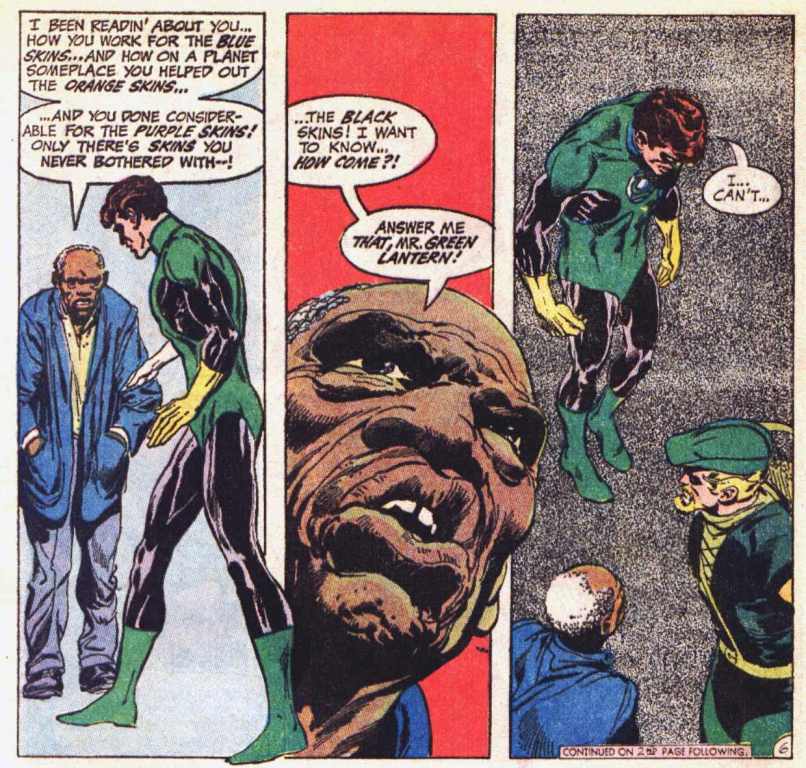
In 1986, Alan Moore solidified the new reality of heroes with the release of Watchmen. The 12 issue story asked for the ugliest truth we can muster – what would the world really look like under the influence of costumed vigilantes, individuals with disproportionate power and all of the sickest fantasies and flaws of ordinary people? The answer is horrific. We expect heroes to hold criminals accountable for their actions, but who holds heroes accountable for theirs? Power and imperfection can be destructive, so for a society no longer willing to believe in perfect people, who looks out for us? What if our heroes don’t want to save us?

Watchmen made icons of morally corrupt, violent, and misguided characters openly playing god. If saving the world took murdering millions, is it worth it? Does that even count as saving the world? We spend the entirety of Watchmen becoming acquainted with the lowest parts of the so-called heroes. When it’s up to them to decide the outcome, there’s a striking level of mistrust (and disgust) in their conclusions. It’s been said that Watchmen killed superheroes. That’s a matter of opinion, but it definitely opened Pandora’s box in terms of what depths of human nature comics could explore. Watchmen became the height of good comic writing, taking home awards that had never been given to a comic before and likely never will again. The message was clear – darkness is good. Darkness sells.
In the wake of Watchmen, comic creators were at liberty to go as low as they needed to in the pursuit of the next great story. That same year, Frank Miller took Gotham to a new level of twisted with The Dark Knight Returns. The story featured an aging Bruce Wayne in bloody conflict with both Gotham and himself. This Batman was not a charming billionaire. He was not a mysterious but trustworthy guardian of the night. He was angry, crass, relentless, and unforgiving. He was a picture of what decades of obsessive crime fighting would likely dissolve to in an ordinary man. Alex Ross’ Kingdom Come followed suit in 1996, showing an unsettling future in which the Justice League has given up and the world has fallen into the hands of psychotic superhumans.
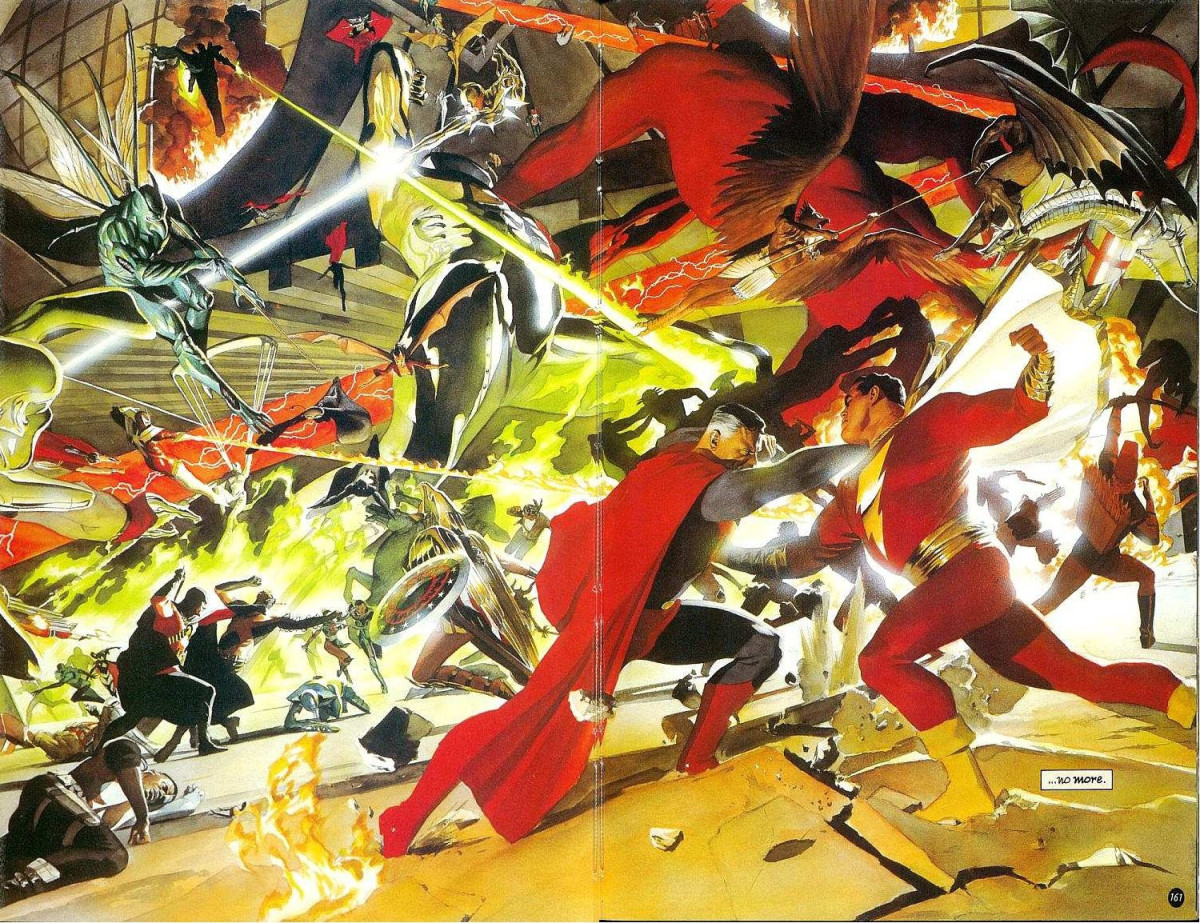
‘Kingdom Come ‘ 1996
If there were any holdout superhero titles still clinging to idyllic heroism in the fight between good and evil, they too stepped into the dark on September 11, 2001. For a third time, the world of trust and safety in the US ended. Tragedy ripped through the city considered to be the heartland of comics – the city that inspired both Gotham and Metropolis, where Superman, Batman, and dozens more were dreamed up and created. Tragedy leaves fingerprints. The attack on the Twin Towers changed the definition of evil for millions. Evil was no longer brought about by individual hatred or monetary gain. War wasn’t just a fight between enlisted men and declared enemies. Death, when brought about in mass numbers with no knowledge or care for an individual and no explainable profit, is chaos. This idea, that chaos is the ultimate evil, was deliberately woven into the fabric of the movie The Dark Knight. Heath Ledger’s Joker is a clear example of it. His motives are unknown – if they exist at all – and that means every single person in Gotham is at risk.
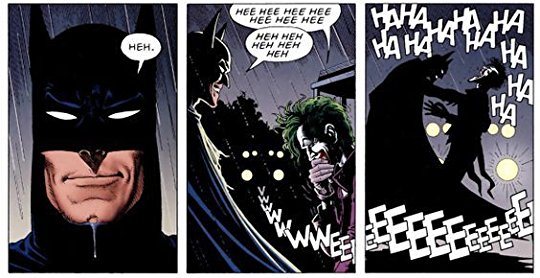
The Killing Joke
What becomes of heroes when they can’t determine who the target of an attack will be when both the attacker and victim can be any face in a crowd? Christian Bale’s Batman does the best he can, creating an invasive system of surveillance throughout Gotham. But what’s freedom without privacy? Can a hero protect freedom while recording and monitoring every move of civilians? What we’ve learned through superhero narratives like this one is that there is no comprehensive answer to any of these questions. There is no clear enemy, no set right and wrong, no definitive fight that will always make the hero a hero. Even the idea of killing as a definitive wrong can be called into question. Alan Moore’s The Killing Joke (1988) explores Batman’s supposed #1 rule: do not kill. That sounds like a hard fact of heroism, but what about all of the lives that would have been saved if Batman killed the Joker instead of letting him live to escape prison time after time? Kingdom Come addresses this rule too. Trust in the Justice League is lost when a younger, newer superhero kills the Joker. It becomes evident that this is the course of action civilians have wanted all along, and the JLA’s mercy is seen as incompetence. For the Justice League of Kingdom Come, these events do not make the path clear cut. The new heroes, initially praised, create a violent system of zero-tolerance justice, and the now aged Justice League is forced to return in hopes of restoring order. Yes, you can ask what about the lives the Joker took because the JLA wouldn’t kill him – but what about the lives that ended because of the young heroes’ liberal use of capital punishment? If superheroes believe they have the right to kill, who’s to say they will always make the right call? Right and wrong is an unsettlingly gray area, especially in the lives of those with extraordinary power. Justice slowly begins to shift into chaos when an individual’s choices become the law.
2016’s Batman v Superman: Dawn of Justice utilized this theme again in a conflict between Batman and Superman. Though both consider themselves to be helping civilians and upholding justice, heroes who are unable to see eye-to-eye become a threat – not just to each other, but to the ordinary people they swear to protect. Once again, the idea of individuals becoming a definitive hand of the law can have deadly consequences, a subject the movie drives home with the death of Superman. In the 75+ years since the creation of American superheroes, their image has evolved from setting an example of patriotic hope to serving as an example of how dangerous power can be. The systems we create, no matter how well intended, will always have consequences. Superheroes have become an important vessel for exploring these ideas.

It’s impossible to tell what the next evolution of comic book superheroes will look like. Stories have become less about creating characters we strive to emulate and more about reflecting truths about ourselves- our flaws, our emotions, and our moral conflicts. There is a good side to embracing this darkness. Superheroes were created to value truth and justice. These honest depictions of human nature can be difficult to accept, but at their core, they question justice by telling the truth. In a way, superheroes stand as firmly on their foundation as they ever did. These darker stories have prompted readers to think about what “truth, justice, and the American way” really means, how it evolves, and how we adapt. Out of the dark has come a comic fanbase more conscious of right and wrong, one with a deeper understanding of what’s at stake in our choices. If dark stories can breed an awareness of personal accountability, they are absolutely worth telling.